4 Creative Ways to Teach Blind Kids about Animals

This post may contain affiliate links; please see our terms of use for details.
When your child is blind or visually impaired it can be difficult to teach them about things they can’t touch.
If your daughter never touches a frog, will she really know what a frog is? Plus how will she learn about all the things that make a frog a frog (they’re green, they hop, they say ribbit…).
These are things that other kids can pick up easily just by watching TV or reading a picture book, but without first-hand experience, these concepts can be a world away for blind children.
So, you take your kid to the petting zoo and you let them touch all the animals. They learn about sheep and pigs, snakes and skunks, and that’s great, but what about tigers? Or whales?
There are some things that just aren’t touchable and we need to help fill in those gaps in as many other ways as we can.
Below are some of our favorite Animal Resources to help your kids learn about all sorts of animals….
#1 Science Museums
Petting zoos really are a great place to start teaching your kids about animals, but another great place is the Science Museum or Natural History Museum.
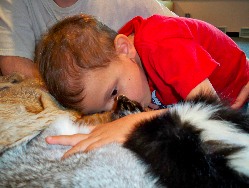 Most Science Museums are very hands-on and they’ll have all sorts of displays that your kids can touch and experience, from taxidermy animals to furs to bones and skeletons.
Most Science Museums are very hands-on and they’ll have all sorts of displays that your kids can touch and experience, from taxidermy animals to furs to bones and skeletons.
You can also often find displays with sounds (like bird calls). These are some of Ivan’s favorites!
Natural History Museums tend to be filled with many more real taxidermy animals, but most are locked away behind glass. Call ahead to find out if they have any out for touching or if they may allow your child to touch the animals as part of a special tour.
Another possibility may be to call your local School for the Blind to see if they have any taxidermy animals you can touch. The Perkins School for the Blind has an amazing collection of animals, furs, models, and skeletons for their students to touch. or you could visit a store like Bass Pro Shops that sells taxidermy animals and take your child on a tour of their wares.
#2 Animal Models
I know that I’ve read over and over that models aren’t adequate for teaching blind children about the real world because they’re just representations, but sometimes getting out to find a real polar bear to touch is just too much of a hassle!
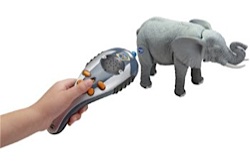 For learning about those sort of animals, we really like the Discovery Kids Smart Animals Scanopedia.
For learning about those sort of animals, we really like the Discovery Kids Smart Animals Scanopedia.
This was a gift from his grandma, and it’s fantastic! The scanopedia comes with three parts: a talking scanner, collectible plastic animal models, and a large wall poster. The scanner can be pointed at the models and it will tell you the name of the animal, the sound it makes, and all kinds of neat facts about it: How big it is, where it lives, what it eats, etc. You can also play a true/false quiz game with the scanner to test your knowledge.
The animals are of course collectible so you can get as many as you want, and each animal you scan into your database opens information for eight bonus animals, so you’ll have lots of animals before you know it.
The poster is also a lot of fun, but is not accessible to blind kids. You’ll have to help your child find the spots on the poster that need to be scanned. You can play games with the poster, like “Name That Call,” where the scanner will play an animal sound and you pick the correct animal by scanning its picture on the poster.
The scanner itself is very easy to hold and operate without vision. The voice is clear and so are the animal sounds. Ivan just loves this toy!
#3 Animal Cards
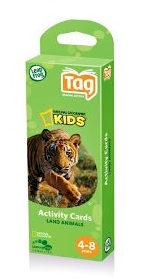 LeapFrog makes these really neat Animal Activity Cards for use with their popular LeapReader (sold separately). Like the Scanopedia, the Activity Cards tell you the name of animals, the sounds they make, and facts simply by running the Tag Reader over the words.
LeapFrog makes these really neat Animal Activity Cards for use with their popular LeapReader (sold separately). Like the Scanopedia, the Activity Cards tell you the name of animals, the sounds they make, and facts simply by running the Tag Reader over the words.
If your child is completely blind, they won’t be able to see the pictures, but they will still find the information and sounds interesting. You can also use thin lines of puffy paint to underline the text so your child can find the words without sight. Add some braille to the top of each card identifying the animal and you’ve got a fun portable animal game.
The Reader is also an entertaining way to teach your child about straight lines and following a line from the left to right, two skills they’ll need in order to read braille.
#4 Animal Sounds
If you’re just looking for some real animal sounds to play directly from your computer, here are our favorite sound sites:
- Animal Sounds from SeaWorld: This is the best site for simple animal sounds. The recordings are short and play directly from the web site, no downloading required.
- Find Sounds: This site searches the internet for you and delivers a variety of sound clips for your search. This can be a good way to show your kids that not all dogs sound the same!
- AnimalSounds.org: If you’re looking for sounds you can download and use off line later, this site is a great resource.
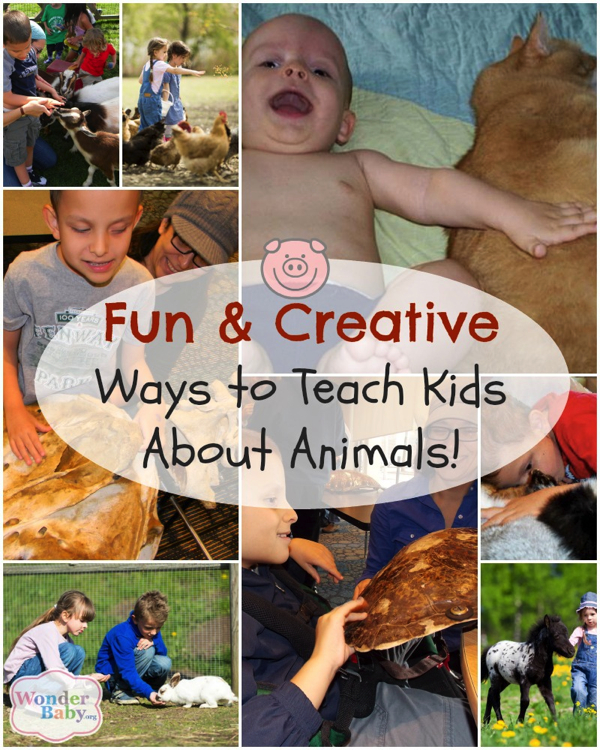
Read this article in Arabic: قراءة هذا المقال بالعربية
Related Posts
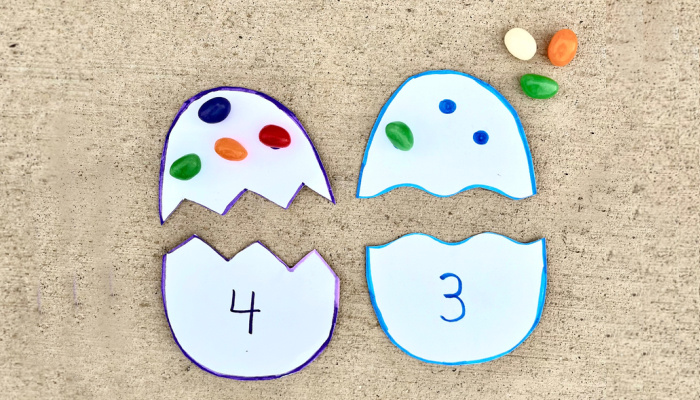
Holiday Crafts and Ideas, Math and Science
Easter Egg Number Matching Game
Counting has never been more fun than with this Easter Egg Number Matching Game. This game is easy to assemble and will surely be a hit with your little one!

Eye Conditions and Syndromes, Support, Visual Impairment
Coping with a Diagnosis: Emotional Support for Families with Visually Impaired Children
Families with emotional support are more resilient. Learn how to establish emotional support with peers, professionals, and the community to help your family thrive.
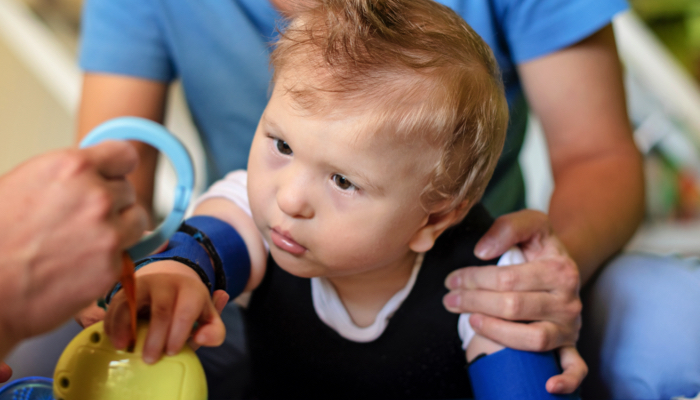
Special Needs, Visual Impairment
Why Early Intervention Is Critical for Blind Children
Children diagnosed with visual processing disorders, low vision, or blindness need specialized treatment. Early intervention programs can help.